Many believe that if the unborn child has a large weight, then this indicates that he will be born strong and healthy, but only doctors and "mothers" who gave birth to such heroes know how dangerous such childbirth can be and what difficulties can arise. in the process of the birth of large fruits. According to statistics, birth big baby occurs in 5-10% of all births.
Fish and shellfish contain high quality protein, vitamins and minerals, and omega fatty acids. Fish nutrition during pregnancy breastfeeding and the first stage of childhood can be especially important for the growth and development of children. In addition, there are indications that eating fish may reduce the risk of dying from heart problems. All fish nutrients may be needed to provide comprehensive benefits in fetal and child development. For this reason, consumers who avoid eating fish and instead take omega-3 supplements may not experience the full benefits.
Definition of concepts
They say about macrosomia or a large fetus when there is a significant excess of its fetometric indicators, compared with the norms for each specific period of pregnancy, or when the mass born child is over 4 kilograms. In addition to the weight of the newborn, their height is also taken into account. So growth normal child is in the range from 48 to 54 centimeters, while the length of the fetus, which has a large weight, is 54-56 centimeters, in some cases children are born with a height of 70 centimeters.
In addition, they do not receive other nutrients present in fish that contribute to the protection of overall health. Use various kinds of fish helps ensure that the majority of fish consumed is low in mercury. Most fish sold in grocery stores have, in fact, lower levels of mercury, including many popular species such as shrimp or shrimp, haddock, salmon, canned light tuna, tilapia, catfish and cod.
What about the mercury present in fish?
Fish absorb methylmercury and almost all species have traces. At high levels, methylmercury can be harmful, and fetal development can be particularly sensitive to this metal. Young children can also be sensitive. For this reason, some women may be able to cut back on fish intake or avoid it altogether.
If the mass of a newborn child is 5 kg or more, then we are talking about the giant fruit. The birth of giant children is much less common than large children and accounts for 1/3000 cases.
Causes
The birth of a large child can be explained by many reasons, among which an important role is played by the characteristics of the mother's organism, as well as the individual features of the child developing in the mother's uterus. Among these factors are:
This recommendation should not affect your diet because these fish are not widely consumed. Also, remember that most fish sold in supermarkets and grocery stores are lower in mercury and that these fish offer health benefits for both you and your children.
Although canned light tuna contains less mercury, albacore has a higher content. Is there an easy way to follow this recommendation? Just change the types of fish you eat according to the general guidelines. And if you or someone you know is fishing in a lake, stream or river, follow the local fishing guidelines. Unless there are local guidelines, you should eat 6 ounces or less of this caught fish per week per week, while children should not consume more than 1 - 3 ounces per week.
genetic predisposition.
It is noted that essential role in the birth of a large child, heredity plays. Parents who are tall and physically well developed are more likely to reproduce a large baby.
Increase in the duration of pregnancy.
Pregnancy normally lasts from 38 to 41 weeks. Subject to an increase in the gestational age relative to the upper limit of the norm, doctors talk about overwearing, which can be both false and true. With a true prolongation of pregnancy, the child after birth has characteristic signs: wrinkling and dryness of the skin (lack of original lubrication), the amount of water is reduced, and their hue ranges from grayish to greenish. Such manifestations can be explained by the aging of the placenta, its multiple calcification, and decreased functions. Lack of nutrients and oxygen leads to the development of hypoxia, placental insufficiency, and in some cases even fetal hypotrophy.
Also, avoid using more fish during the rest of the week. In a notice published in the Federal Register. From this point on, memory evolves slowly during the first year of life, and then constantly grows. But how is it activated?
When does it develop? How is he stimulated? In order to talk about memory and how it develops in childhood, it is important that from the very beginning we separate the two different concepts. One thing is recognition and the other thing is memory. Firstly, it is the ability to identify what is already known, and secondly, the ability to call up knowledge in a short period of time of what is in memory. “It only takes 12 hours for a child to recognize the voice of his mother,” says Karm Fons. In fact, numerous studies have shown that babies can recognize a mother's voice or even a tune they heard during pregnancy.
The presence of diabetes in the mother.
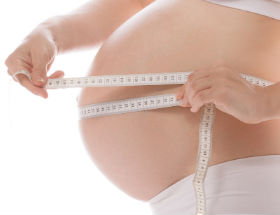
The birth of a large baby (or the reflection of a larger fetus from the estimated gestational age during an ultrasound examination) may be due to the presence of diabetes in the expectant mother or the development of diabetes during pregnancy (gestational diabetes). In women diagnosed with diabetes, children are born with characteristic signs, which in gynecology is called diabetic fetopathy. The large weight of the child comes from the presence of constant jumps in glucose levels and hormonal storms in the mother's body. A characteristic symptom of diabetic fetopathy is an excess in the weight gain of the baby after 20 weeks of pregnancy, which occurs against the background of developing polyhydramnios. As is clear from the above, the child, although born large, is already unhealthy. Pregnant women with diabetes are hospitalized up to 32 weeks and after the examination they decide on the methods and timing of delivery.
Forms of memory in the uterus
Minna Huotilainen, the author of a revolutionary experiment, offers something similar to the Finnish researcher: from the 29th week of pregnancy until childbirth, a group of women heard hundreds of times one word with three syllables - potatoes - it does not mean anything. After birth, the scanners were used to evaluate the babies' brains. And the vast majority responded to this word. Thus, the results seem incontrovertible: although the fetal brain is still in its developmental stage, it can remember songs or snippets of speech.
Why we forgot the first few years
In other words: memory is formed in the uterus, and not from birth. But this experience exists, and the brain is archived, not forgotten, says Fons. Mind cleansing. Not a single theory explains why we don't have memories until the age of three. The other is based on the work of a group of Canadian neuroscientists who discovered just over a year ago that high production of neurons - neurogenesis - in the brain's hippocampus in the first years of a child's life "clears" his mind, discarding what is not useful. Thus, the hippocampus will not be able to store all living memories.
Rh-conflict pregnancy.
One of the reasons for the appearance of a large fetus is the presence of an Rh-conflict pregnancy. Such a complication of pregnancy occurs when a child who has an Rh positive is born by a woman with a negative Rh. As a result, the child gets a hemolytic disease, with anemia, jaundice, characteristic of the pathology, and in especially severe cases, swelling also joins these symptoms. This is called the edematous form of hemolytic disease. In the cavities of the fetus (thorax, abdomen), there is an accumulation of fluid, and the spleen and liver of such children have a significant increase in size. Hepatosplenomegaly and massive edema determine the presence of a large weight in a child.
First Memory Experts talk about the first memory, called recognition, which allows a child to respond to smells or sounds with an unconscious memory. "In the short term, she still doesn't have a memory, so it's impossible to remember anything that was there before," says neuropsychiatrist Roser Colom. As the first few weeks of life pass, the child observes routine actions that are repeated in sequence, which begins to develop his memory in the short term.
Memory capacity at each age
This is true after 3 months. A child at this age can imitate certain actions. Memory also allows you to differentiate between objects you already know and those you don't. “Babies at 3 months old can already store visual information for 10 seconds,” explains Carme Fons. How it works after 6 months Memory helps you recognize people outside your immediate environment if you have seen them before. And, above all, it helps you in your cause and effect relationships. “You know, for example, that if you press a button on your favorite toy, music will play or it will move,” Fons says.
features of the placenta.

The presence of functional and structural features of the placenta can become the cause of the formation and birth of a large child. Often the birth of a baby with a large weight coincides with the presence of a thick (more than 5 centimeters) and large placenta. A massive and thick placenta increases the intensity of the metabolism of microelements and nutrients, which leads to accelerated development of the fetus. In addition to an increase in the intensity of the child's blood supply and the volume of circulating blood, there are bursts of placental hormones that indirectly affect the metabolism in the mother's body and enhance the development and growth of the baby.
Etc. "However, it's impossible to know for sure if you have a conscious memory because you can't express it through speech yet," he notes. After 9 months, his memory allows him to store the information and compare it with the new one he acquires. "It's at this age, or a little later, when you can remember where you left the object and try to recover it," Roser Kolom explains. His memories from the age of 1. A significant change in this process, as the child begins to become familiar with the words.
At the first stage, visual memory - the ability to retain a short-term image - is more powerful than verbal, but it decreases as language begins to grow in the brain. There are people who don't remember anything until the age of eight, and there are people who remember things that lived until the age of 3. “They are often short-lived, linked to the events that triggered the seal,” Roser Colom says. But experts agree something: our memory is not perfect. Forgetfulness is a normal phenomenon of the human memory system. “When we learn new things, we get more interference in the brain, and we lose a bit of previously recorded information,” our consultants conclude.
Subsequent pregnancies that end in childbirth.
Celebrate right proportional dependence on the number of births and the weight of children born. After the second and third births, as well as further, the formation of a large fetus occurs, which is approximately 30% larger than the weight and size of the firstborn. Doctors explain this fact by the presence of such moments:
Various types of memory
And by the way, my memory did not fail me: yes, it was Napoleon, the author of the quote that opens this report. There are several types of memory that we can use at the same time. Sensory memory. The very short duration serves to ensure comprehension. Short term memory. It is a system for storing information for a certain period of time. It may last for several seconds. Long term memory. Allows you to save information for many years. There are several subtypes: episodic memory, which allows you to store certain episodes of life; semantic memory that stores knowledge of the world.
firstly, there is a psychological factor, a woman who is carrying a second, third, and so on child is already well acquainted with all the features of pregnancy and, accordingly, is more calm and balanced;
secondly, the large size of the fetus during subsequent pregnancies may be due to improved intrauterine nutrition, since the circulatory network of the uterus after the first birth is more developed;
Manage your child's memory
And procedural memory. It is the one that allows us to perform actions after learning them. It stimulates your learning ability through these simple exercises. Memory is related to observation. The fetus has tactile sensitivity, and 14 - reactions to pain. Also at this point he begins to have a bodily concept. You know what position you are in, and although your movements are still very jerky, like spasms, you can change it.
Anomalies of tribal forces
In addition, he likes one position more than another and will seek his favorite. From the hands enter the scene. He still has time to complete his motor skills, but despite this, at 20 weeks he is already very active in his environment. Curiosity: Contrary to what may seem like your child is moving around a lot, it doesn't mean that he will be very moved or nervous afterward. In fact, it has much more to do with you.
also, more favorable conditions for the development of a second child can be explained by the fact that the uterus is in a more stretched state, and the abdominal muscles have little resistance.
The nature of the nutrition of a woman in position.

A significant role in the process of increasing the weight of the child is also played by the lifestyle of a woman and the nature of her diet, this is especially true after the 20th week of gestation. Hypodynamia, abdominal growth and the use of a large number of high-calorie foods (pasta, sweets, muffins) leads to the accumulation of fatty tissue, and also provokes the development of macrosomia in the unborn child.
Are you nervous, speeding up? Maybe you understood it. Or you may just be able to perceive it or ease into your disposition. Apart from touch, the two senses by which the fetus receives more stimuli are the ear and taste. This last one develops between 14 weeks and the amniotic fluid brings with it information about the nutrients you take in and the fetus takes over. “Groups of prenatal mothers tell us that after they have eaten a particular thing, they notice that their son is calmer or more restless,” explains Marcel Cortada, a psychiatrist and professor at the University of Barcelona.
Obesity.
Excessive weight of a woman during and before pregnancy also plays a role. This may be due not only to a lack of proper nutrition, but also caused by a violation of lipid metabolism in the body, respectively, this leads to a violation of the metabolism of carbohydrates, fats and proteins in the fetus, intrauterine damage to the pancreas and liver occurs, and the compensatory functions of the placenta are activated. These factors together contribute to weight gain and fetal growth. If a woman has obesity of the first degree, then the birth of a large fetus is observed in 28%, in the presence of a second degree of obesity, this figure rises to 32%, and if there is obesity of the third degree, the probability of having a large child is 35%.
Increasing the duration of pregnancy
They seem to have clear preferences. On the other hand, in taste the fetus learns from its environment. A study published in the journal Pediatrics concluded that babies prefer the scents they received in the womb and that they can recognize.
As for the ear, this is by far the most studied meaning. And more things than you imagine. Your heartbeat is the most constant sound for him, and when he is born, he will soothe you. Some maternity hospitals have tested premature babies with heart sounds, and the sedative effects they have achieved have exceeded doctors' expectations. This is also the reason why babies relax when their mothers hold them on their chests.
Taking medications.
![]()
Uncontrolled use of certain drugs by a pregnant woman that activates anabolic processes and improves uteroplacental circulation (for example, Actovegin, Gestagens) can cause an increase in fetal weight.
He distorts, but he raises his tone, and that will be enough to recognize him when he was born. On the other hand, we know that the fetus responds to musical stimuli and seems to be able to subsequently recognize the tune that has been played throughout the pregnancy. It has not been proven that listening to music early can create real musical interest in a child, although musicians in the category of Yehudi Menuhin or Arthur Rubinstein are convinced. A study by the University of Amsterdam showed that the sense of rhythm develops in the womb so that we are born with it.
Other factors.
Age expectant mother(under 20 years old or over 34 years old), cycle disorders, the presence of inflammatory processes in the reproductive system and genital organs can also cause an increase in the size and weight of the fetus.
Large fetus: diagnosis and signs
If a woman has a large belly during pregnancy, this is not necessarily evidence of a large fetus. In such cases, it is necessary to exclude the presence of multiple pregnancy and such a feature of gestation as polyhydramnios (a large percentage of women neglect ultrasound even in such an important period of their lives).
By the beginning of the 38th week of pregnancy, and in some cases even earlier, signs of the presence of a fetus big size are objective data that are recorded during regular visits to the antenatal clinic. The main indicators include weight measurement, weight gain of 500 grams per week; in the absence of edema and other manifestations of gestosis, they are a reason for suspicion of the presence of a large fetus.
With a large fetus during pregnancy, the signs are determined on the basis of measurements of the woman's abdomen (bottom height and uterine circumference), confirmation of suspicions of a large fetus are indicators: the height of the fundus of the uterus is more than 40 and the abdominal circumference is more than 100 cm.
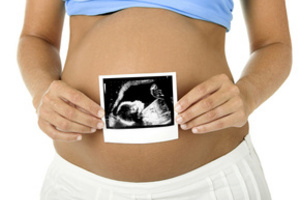
Since a fetus with a large weight in utero takes up much more space (compared to a normal fetus), the internal organs of a woman are subjected to infringement and compression, and the load on these organs increases. This leads to the occurrence of such phenomena as shortness of breath, constipation, heartburn (due to the reflux of the contents of the stomach into the esophagus), and frequent urination. Due to the increase in the size of the uterus, additional pressure appears on the inferior vena cava, as a result, the likelihood of developing fainting conditions while lying on your back in a horizontal position increases. The load on the musculoskeletal system increases, this load is manifested by pain in the ribs, spine, lower back, legs. The course of varicose veins of the lower extremities may occur or be aggravated. There is also a high probability of an increase in the tone of the uterus and the appearance of stretch marks on the abdomen.
A huge role in diagnosing the presence of a large fetus in a woman is played by ultrasound diagnostics, which allows you to carefully measure the fetometric data of the embryo and establish its estimated weight. Measure the length of the humerus and femur, the circumference of the abdomen and head. The significant size of the abdomen and a large head, enlargement of the spleen and liver, the presence of fluid in the body cavities of the child indicate the presence of an edematous form of hemolytic disease in the fetus.
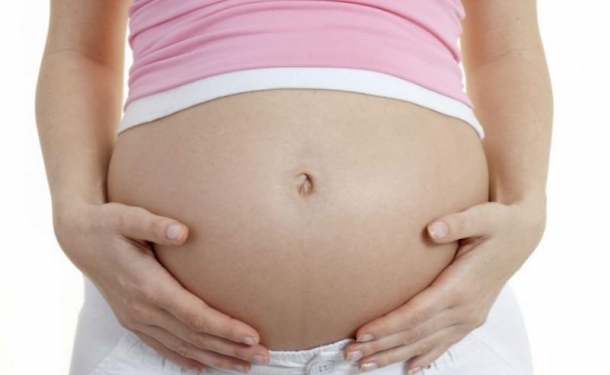
The course of pregnancy
The course of pregnancy in women with a large fetus usually passes without significant complications. The complications described above (shortness of breath, problems with the digestive tract, fainting) occur at 38-40 weeks during pregnancy with a large fetus. There is also a high probability of progressive hypoxia and placental insufficiency against the background of a discrepancy between the rapidly increasing fetal weight and the rate of uteroplacental blood flow. Features of conducting such a pregnancy include:
limiting or canceling the use of anabolic drugs;
diet correction (exclusion of refractory fats and easily digestible carbohydrates);
physiotherapy;
calculation according to the size of the belly of the pregnant woman and the ultrasound data of the estimated weight of the child;
consultations with an endocrinologist and a glucose tolerance test to exclude diabetes mellitus;
a thorough examination to exclude multiple pregnancy and polyhydramnios.
The course of childbirth
Many expectant mothers ask themselves: “How to give birth if the fetus is large?”. The answer to this question is the nature of the course of childbirth, which, in the presence of a large fetus, has its own characteristics. Spontaneous childbirth in the presence of a large fetus is often complicated by such circumstances:
Clinically narrow pelvis.
Such a complication occurs when the fetus has a large head, and even if the cervix is fully opened (10 cm), it does not advance. Such a complication is called a discrepancy between the size of the baby's head and the pelvis of the expectant mother. characteristic feature is that the parameters of the mother's pelvis may be normal, but childbirth is significantly hampered even if there are strong and good contractions. If there is an anatomically narrowed pelvis (the dimensions of the pelvis are shortened by 1-1.5 centimeters or more), then the issue of performing a caesarean section is discussed.
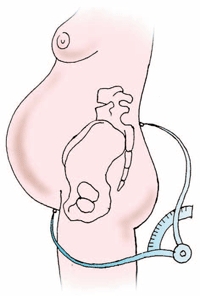
Untimely outpouring of water.
The discharge of amniotic fluid before the opening of the pharynx by 8 cm (early) may be due to the high position of the head of the child, due to its large size, it cannot normally press against the entrance of the small pelvis and move forward, respectively, there is no differentiation of the amnion into the posterior and anterior. Early discharge of amniotic fluid threatens to fall out of small parts of the child (handle, leg) or umbilical cord. In addition, a complication can slow down the process of opening the cervix of the uterus, which leads to a lengthening of the first stage of labor and significantly weakens the woman in labor. If part of the fetus or umbilical cord falls out, immediate delivery through surgery is indicated.
Anomalies of tribal forces.
The birth of a large fetus is quite often complicated by anomalies of the birth forces. A protracted labor process leads to a decrease in the frequency and intensity of contractions (weak labor activity appears, primary or secondary). In such cases, the child suffers because intrauterine hypoxia increases (first, tachycardia is heard in the fetal heartbeat, and then slowing down - bradycardia). Such signs are also an indication for operative delivery.
Threat of uterine rupture.
The pushing period at the birth of a large child is also dangerous. During the passage of the fetal head through the birth canal, it changes shape, acquiring the most suitable configuration for overcoming the planes of the small pelvis (the bones of the skull seem to overlap one another). If the size of the baby's head and the mother's pelvis are disproportionate, overstretching of the lower segment of the uterus occurs, which can cause it to rupture.

Fistula formation.
Prolonged standing of the baby's head in one of the planes of the pelvis leads to compression of the soft tissues of the birth canal (vagina and cervix), the bladder is also compressed in tandem with the urethra in front and the anus, respectively, behind. Such pressure leads to a violation of blood circulation in the tissues, ischemia occurs, followed by the death of fiber (tissue necrosis). Dead tissues after childbirth are rejected by the body, which leads to the appearance of rectovaginal and genitourinary fistulas.
Rupture of the articulation of the womb.
Severe passage of the baby's head can cause damage to the pubic articulation (divergence of the pubic bones, rupture of the ligaments), often such injuries, especially severe ones, require exclusively surgical treatment.
Shoulder dystocia.
Delivery of a fetus with a large size can be complicated during the passage of the shoulders, this complication is especially typical for children with diabetic phenopathy (the size of the head is much smaller than the size of the shoulder girdle). In such situations, additional assistance is provided during the passage, which often ends in fractures of the cervical spine, humerus or collarbone.
Cerebral hemorrhage or cephalohematoma in the fetus.
The development of such a complication occurs against the background of a disorder of the uteroplacental blood flow, followed by hypoxia of the child, anomalies of the birth forces. During a change in the configuration of the head, there is a strong displacement of the bones and their excessive compression, which ends in hemorrhage into the periosteum or brain.
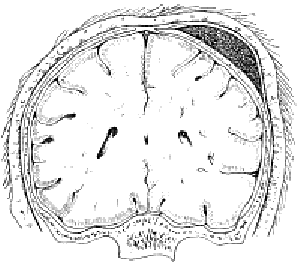
Birth management
If a woman is diagnosed with a large fetus, then the nature of delivery: through the natural birth canal (normal birth) or through surgery (caesarean section) depends on many factors. Planned operative delivery is required for the following indications:
large fetus in women over 30 and under 18;
myomatous nodes and a large fetus, anomalies in the development of the uterus;
anatomically narrow pelvis with a large weight of the child;
a large child and over-pregnancy;
the totality of a large fetus and its breech presentation;
large fetal weight with an aggravating obstetric history (use of assisted reproductive technologies for infertility, recurrent miscarriage, stillbirth in the past);
indications that require the exclusion of a tight period (high myopia, cardiovascular pathology) in combination with a large child.
Cesarean section in the event of emergency indications is performed in any case of complications in childbirth (incorrect insertion of the head, the threat of uterine rupture, weakness of contractions).
In the first couple of hours after delivery (early postpartum period) there is a high risk of developing hypotonic uterine bleeding, which is caused by excessive distension of the uterus and prolonged labor.

In the course of drawing up a plan for delivery through the natural birth canal, you need to consider:
childbirth should take place under the monitor control of contractions and the condition of the child;
it is obligatory to maintain a partogram (a schedule taking into account the time of each of the periods of labor, the intensity of contractions, the opening of the uterine os);
in childbirth, a re-measurement of the parameters of the pelvis should be carried out;
timely and adequate pain relief, as well as the introduction of antispasmodics;
prophylactic administration of reducing agents in the pushing period in order to prevent weakness of attempts;
early diagnosis of a narrow (clinically) pelvis;
prevention of possible bleeding in the first 2 hours after childbirth and in the postpartum period.
Children who are born weighing four or more kilograms fall into a high risk group for pathologies of the central nervous system, the development of metabolic disorders, asphyxia, the development of birth injuries (fractures of the collarbone, shoulder, cerebral hemorrhage, cephalohematoma), general morbidity and mortality in early neonatal age (the first 28 days of life).
Question answer
Is hospitalization required before childbirth, in case of pregnancy with a large fetus?
Yes, all women diagnosed with a large fetus should go to the hospital a little earlier than the due date, at about 38-39 weeks. During this time, the doctor will perform a thorough diagnosis, assess the condition of the expectant mother (presence of pregnancy complications, extragenital diseases), carefully measure the size of the abdomen and pelvis of the woman in labor, and draw up a plan for conducting the birth process. If there are indications for a planned cesarean section, then an operation plan will be drawn up.
How to prevent the development of a large fetus?
First of all, from the moment of pregnancy, you need to adhere to proper nutrition. The diet should consist of food rich in carbohydrates, fats and proteins. You should give up the habit of overeating, as well as the passion for fried, fatty foods and pastries with sweets. If the state of health allows, it is necessary to perform exercises for pregnant women in order to avoid hypodynamia (prolonged sitting or lying down).

During my first pregnancy, I was diagnosed with a large fetus. Is it necessary to perform a caesarean section?
No, operative delivery is not a mandatory algorithm for childbirth, especially in the first childbirth in young women. In most cases, in young healthy women, the process of pregnancy and childbirth takes place without significant complications and with a favorable outcome.
